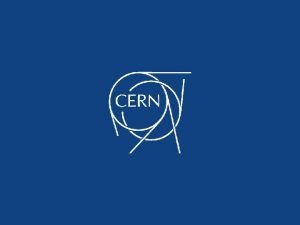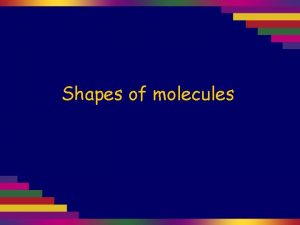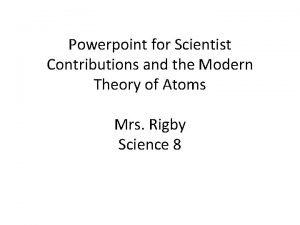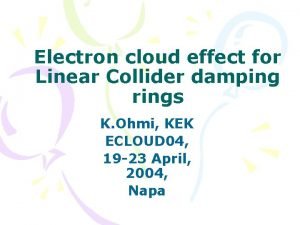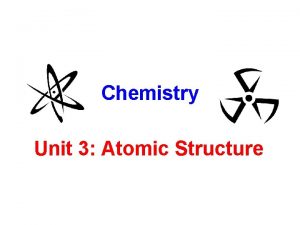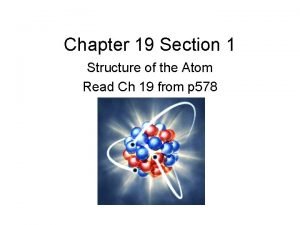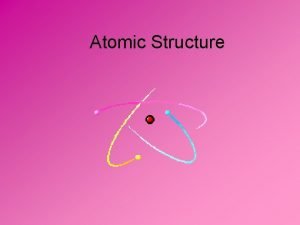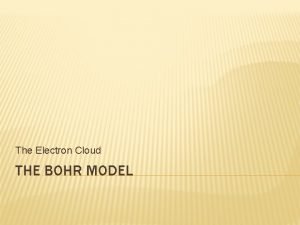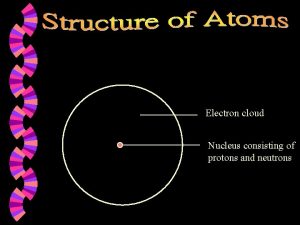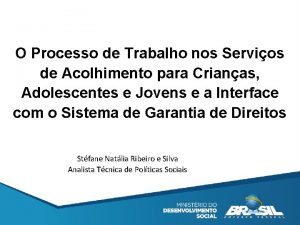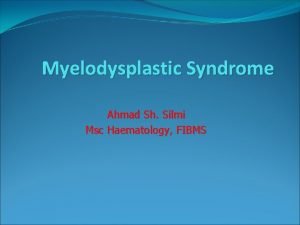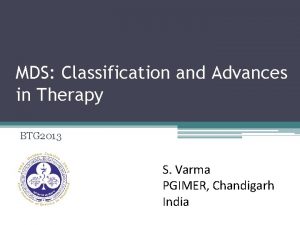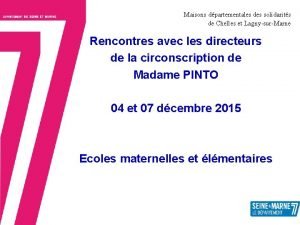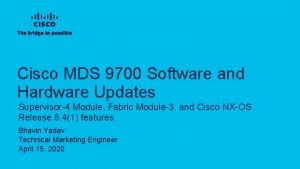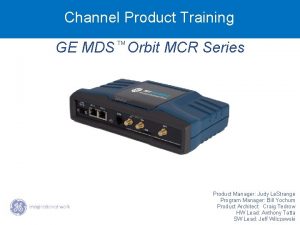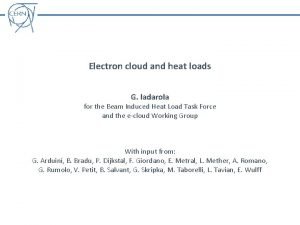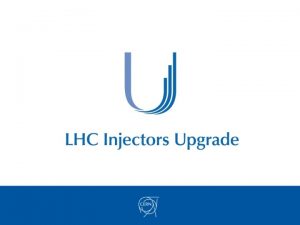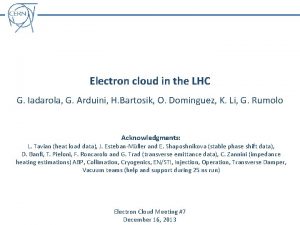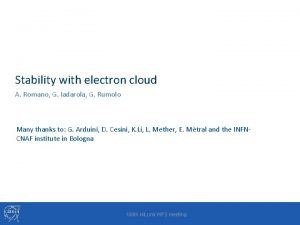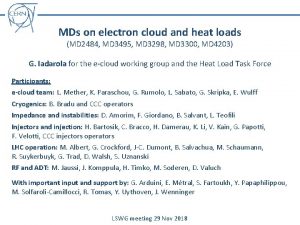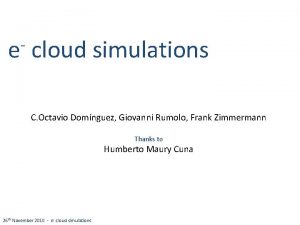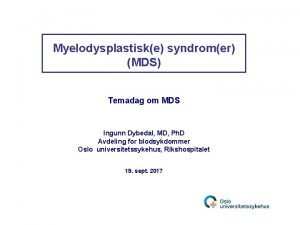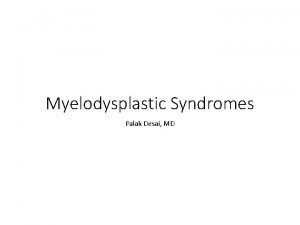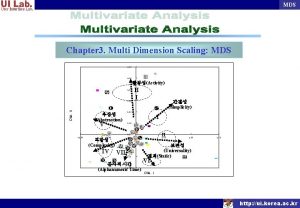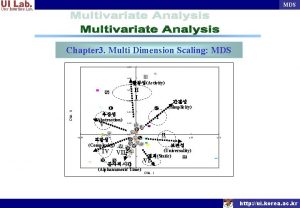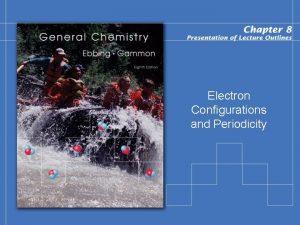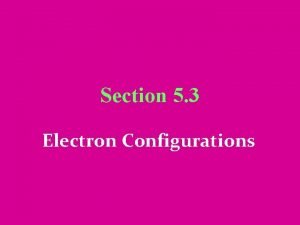Electron cloud MDs G Iadarola and G Rumolo



















- Slides: 19

Electron cloud MDs G. Iadarola and G. Rumolo for the e-cloud team Many thanks to: BE-ABP, TE-CRG, TE-VSC and in particular G. Arduini, V. Baglin, H. Bartosik, B. Bradu, K. Brodzinski, L. Carver, S. Claudet, P. Dijkstal, K. Li, L. Mether, E. Metral, J. E. Muller, Y. Papaphilippou, S. Redaelli, A. Romano, E. Rogez, B. Salvant, C. Schwick LHC MD Day 2017

Outline • e-cloud MDs in 2016: main results o MD 468: intensity scan with 25 ns beams o MD 461: studies with the 8 b+4 e scheme • Requests for e-cloud MDs in 2017 -18 o Doublet beams o High intensity 50 ns beams o Other 25 ns beam variants § High intensity 8 b+4 e § Further optimized combined scheme § Injections of (3 x 80) bunches or more

Outline • e-cloud MDs in 2016: main results o MD 468: intensity scan with 25 ns beams o MD 461: studies with the 8 b+4 e scheme • Requests for e-cloud MDs in 2017 -18 o Doublet beams o High intensity 50 ns beams o Other 25 ns beam variants § High intensity 8 b+4 e § Further optimized combined scheme § Injections of (3 x 80) bunches or more

MD 468: intensity scan with 25 ns (18 Aug 2016) Motivation • Dependence of electron cloud buildup on the bunch intensity is a key ingredient to make solid predictions for HL-LHC Performed tests • Three consecutive fills (full operational cycle to collisions) with same filling scheme (2040 b. , in trains of 72 b. ) and same RF settings ( same bunch lengths) • Three different bunch intensities: 1. 1 e 11, 0. 9 e 11, 0. 7 e 11 p/bunch (the first fills could be performed during physics time) • Collected heat loads and stable phase measurements • Performed chromaticity scan in collision to study impact on stability and emittance preservation • The e-cloud intensity threshold could be clearly identified • Collected data used to estimate performance reach for the 2017 p-p run Preliminary version of the MD note available here

MD 468: intensity scan with 25 ns (18 Aug 2016) Collected data: heat load in different machine components Preliminary version of the MD note available here

MD 468: intensity scan with 25 ns (18 Aug 2016) Collected data: cell-by-cell heat loads Preliminary version of the MD note available here

MD 468: intensity scan with 25 ns (18 Aug 2016) Collected data: bunch-by-bunch energy loss (RF stable phase) Stable phase data courtesy of J. Esteban Muller Preliminary version of the MD note available here

MD 421: e-cloud studies on 8 b+4 e scheme (6 Oct 2016) Motivation: • Definition of optimized backup filling scheme for HL-LHC (to be used in case of strong limitations from e-cloud when operating with high intensity 25 ns beams) • In particular, explore the possibility of mixing 8 b+4 e trains with standard 25 ns trains to “tailor” the heat load to the available cooling capacity • Study beam stability in the absence of e-cloud Performed tests (part 1): • The full operational cycle was performed with a combined filling scheme (share 45% 8 b 4 e vs. 55% 25 ns BCMS) with a total of 1908 bunches • Heat loads and stable phase measurements were collected Preliminary version of the MD note available here

MD 421: e-cloud studies on 8 b+4 e scheme (6 Oct 2016) Collected data: bunch-by-bunch energy loss (RF stable phase) Stable phase data courtesy of J. Esteban Muller e-cloud buildup from standard beam does not “leak” into the 8 b 4 e trains Preliminary version of the MD note available here

MD 421: e-cloud studies on 8 b+4 e scheme (6 Oct 2016) Collected data: heat loads Combined scheme 25 ns (BCMS) On the most critical sector observed 40% heat load reduction at the price of 15% loss in number of bunches Preliminary version of the MD note available here

MD 421: e-cloud studies on 8 b+4 e scheme (6 Oct 2016) Performed tests (part 2): • Machine filled at 450 Ge. V with 8 b 4 e trains with low chromaticity and octupole settings (Q’ = 5/5, Ioct = 6. 5 A) no transverse emittance blow-up Q’ = 5/5, Ioct = 6. 5 A • With the same setting strong emittance blow-up was observed when injecting the operational (BCMS) 25 ns beams e-cloud confirmed to have a dominant role in the observed instabilities Q’ = 5/5 Ioct = 6. 5 A Preliminary version of the MD note available here Increasing Q’ and Ioct Q’ = 20/15 Ioct = 50 A

Outline • e-cloud MDs in 2016: main results o MD 468: intensity scan with 25 ns beams o MD 461: studies with the 8 b+4 e scheme • Requests for e-cloud MDs in 2017 -18 o Doublet beams o High intensity 50 ns beams o Other 25 ns beam variants § High intensity 8 b+4 e § Further optimized combined scheme § Injections of (3 x 80) bunches or more

MDs in 2017 -18: studies with doublet beams Status • Doublets could not be used in 2016 due to limitations from the SPS beam dump • In 2015, due to strong transverse instabilities, it was possible to accumulate only trains of 24 doublets (up to ~250 doublets in total) enough to prove e-cloud enhancement • This schemes becomes interesting only if it is possible to store significantly more bunches (>1000 doublets) and in longer trains (48 -72 doublets/train) Main goals: • Identify optimal settings to stabilize the beam (Q’, octupoles, ADT) profiting of e-cloud tunes and accumulated scrubbing in 2015 -17 • Assess the achievable beam intensity • In case of positive outcome, we could think of longer test period to probe the scrubbing efficiency (in 2017 or later) Losses observed in 2015 on trains of 72 b. 5 ns 20 ns

MDs in 2017 -18: studies with doublet beams Preparation • Doublets to be prepared in the injectors (single trains of 24, 48 and 72 doublets) Ideal moment for these studies is MD Block 2 (September) • Intensity: ~1. 6 e 11 p/doublet (and lower for studies) • Some time consuming setup needed right before: o Reconfiguration and validation of thresholds on interlocked BPMs in IR 6 o SPS-to-LHC transfer checks o Orbit measurement to be “gated” on 12 b train with non-split bunches o What about SPS-BQM and IQC? • To be rolled back after the MD Expected overhead of the order of 1 shift convenient to do all studies in a single MD session of ~24 h including setup and rollback Losses observed in 2015 on trains of 72 b. 5 ns 20 ns

MDs in 2017 -18: studies with high intensity 50 ns • Tests with 50 ns bunch trains with high bunch intensity (2012 like, ~1. 7 e 11 p/bunch, 6. 5 Te. V), possibly with full machine. Main goals: o Getting a crosscheck of heat load models (impedance, synchrotron radiation) o Provide a beam based calibration of the heat load measurements (complementary to the one usually done with electric heaters) 50 ns, 296 b. Synchrotron Radiation Impedance (R. W. ) Measured

MDs in 2017 -18: studies with high intensity 50 ns • Tests with 50 ns bunch trains with high bunch intensity (2012 like, ~1. 7 e 11 p/bunch, 6. 5 Te. V), possibly with full machine. Main goals: o Getting a crosscheck of heat load models (impedance, synchrotron radiation) o Provide a beam based calibration of the heat load measurements (complementary to the one usually done with electric heaters) 25 ns, 48 b/train, 601 b. Synchrotron Radiation Impedance (R. W. ) Measured

MDs: studies with high intensity 50 ns • Tests with 50 ns bunch trains with high bunch intensity (2012 like, ~1. 7 e 11 p/bunch, 6. 5 Te. V), possibly with full machine. Main goals: o Getting a crosscheck of heat load models (impedance, synchrotron radiation) o Provide a beam based calibration of the heat load measurements (complementary to the one usually done with electric heaters) • Interest also for other studies (especially w. r. t. open questions from 2012): • Collimation, RF heating, beam-beam, instabilities • What are the requirements in terms of intensity ramp-up? 25 ns, 48 b/train, 601 b. Synchrotron Radiation Impedance (R. W. ) Measured

MDs in 2017 -18: other 25 ns beam variants • Test high intensity 8 b+4 e, 1. 6 e 11 p/bunch available in the injectors (~1 shift) Important to validate HL-LHC backup scenario • Further optimize combined scheme with 8 b+4 e (~1 shift) 8 b 4 e and BCMS mixed in the SPS • If trains of 320 bunches (4 x 80 b) are available compare heat load and stable phase measurements against 288 bpi (~1 shift) 80 bpi (2016 measurement at 450 Ge. V) – MD 1266

Thanks of your attention!
 Giovanni rumolo
Giovanni rumolo Electron cloud shape
Electron cloud shape Electron cloud
Electron cloud Electron cloud levels
Electron cloud levels Electron cloud model scientist
Electron cloud model scientist Electron cloud rings
Electron cloud rings Zumdahl chemistry
Zumdahl chemistry Section 1 structure of the atom
Section 1 structure of the atom Mass and matter
Mass and matter Bohr rutherford diagram calcium
Bohr rutherford diagram calcium Calcium electron cloud
Calcium electron cloud Nota tecnica 02/2016 snas/mds
Nota tecnica 02/2016 snas/mds Mononucleas
Mononucleas Mds metoda dobrego startu
Mds metoda dobrego startu Fab classification of mds
Fab classification of mds Assistante sociale chelles
Assistante sociale chelles Ge mds transnet 900 radio
Ge mds transnet 900 radio Blog mds parcelas pagas
Blog mds parcelas pagas Cisco mds
Cisco mds Ge mds orbit mcr
Ge mds orbit mcr
